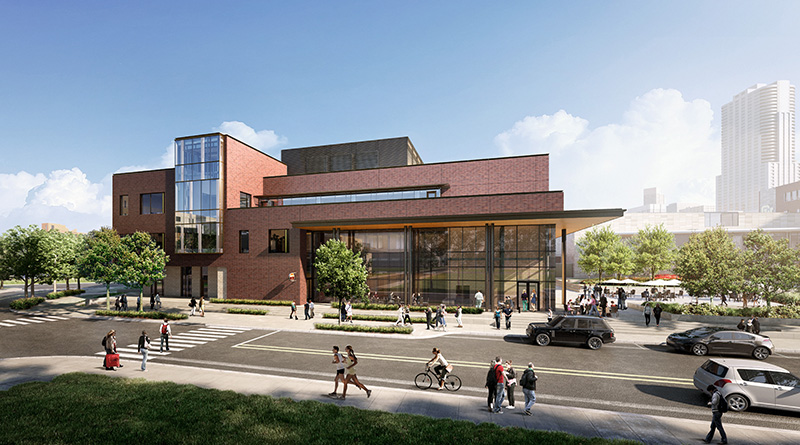Q&A: Trends In Wellness Facility Design
By Lindsey Coulter (09/28/2016)

Photo Credit: SmithGroupJJR
National architecture firm SmithGroupJJR has a history designing both traditional recreation and athletics facilities as well as cutting edge wellness facilities. Its portfolio currently includes a new 92,000-square-foot student wellness center for the University of Colorado Denver, which will open in January of 2018; a hybrid recreation and wellness center at the University of Houston Clear Lake (to open in fall 2018) that includes general student recreation and wellness spaces in addition to labs and classrooms for the health and human performance department; and an outdoor recreation planning and implementation project for the University of Arkansas Fayetteville being phased through 2019.
School Construction News spoke with Bill Ash, design principal at SmithGroupJJR’s Detroit office and part of the firm’s national higher education practice, and Clint Menefee, principal and higher education studio leader at SmithGroupJJR’s Dallas office, to learn more about wellness center design and how these innovative facilities can improve student life, student engagement and even aid in recruitment and retention.
Q. How can investing in modern wellness facilities help keep colleges and universities competitive?
Menefee: These facilities are most definitely looked at as recruiting tools. Sometimes campus tours begin and end at the recreation and wellness center because it very quickly gives a fantastic point of view of the campus and engagement of students.
Ash: In the past there were certainly facilities that were totally recreation and not much on the wellness side. The inclusion of the student perspective and ideas about balanced life on campus are now really driving more toward this wellness center model, which is about all dimensions of wellness. We see serious talk at every level of governance for these institutions about inclusion of conversations and spaces that address financial wellness, spiritual wellness, etc., at at least the same level as conversations about physical wellness.
Q. Can wellness facilities also serve as income generators or offer other manners of ROI?
Menefee: The return on financial investment is a tough thing. There’s a lot of discussion on offsetting student fees, but most often student fees not only go to construct a building, but also to operate the facility and the recreation department. It’s unlikely that a collegiate recreation and wellness center will ever literally return money, but I do believe there are things colleges and universities can do programmatically to offset some of that cost. It’s something most universities believe is an important part of the day-to-day student life and the heartbeat of the campus, but in most cases it’s not a financial breadwinner.
Ash: For the most part, conversations don’t hover around direct payback. It’s more indirect; an increase in enrollment or institutional identity that drives and increases the value of the brand, and increases the perspective students have of the value of their institution among their peers. If facilities like the recreation and wellness center are subpar compared to an institution’s peers, then the value also seems to decrease accordingly.
Q. How is technology playing a larger role in the design of wellness facilities?
Menefee: We’re seeing these more as integrated educational facilities rather than just recreation and wellness facilities. We’re seeing more spaces embedded with teaming or teaching technology where students can plug in and collaborate in a number of ways. In addition, the rapidly expanding technology package in athletic equipment…changes just as fast as our phones change or our computers change. We are seeing more virtual reality-type situations where students can compete against someone in a cycling studio across state lines or at another institution. There are a lot of competitions being held through technology and equipment. The ability to document and capture workouts and compete across the internet is playing a big role in the design of fitness equipment and the user experience as well.
Ash: Beyond the fitness environment and interactivity, technology is a means…for the wellness center to be connected to the campus on so many levels that can address dimensions of student wellness that aren’t necessarily physical. For example, what is the connection to the city that might be immediately off campus, where are the bike routes students can take, who are the counselors and where are they located on campus? We are incorporating all different kinds of information about how students can connect to the campus and to the surrounding city.
Read more of this Q&A in the September/October issue of School Construction News, available soon.

